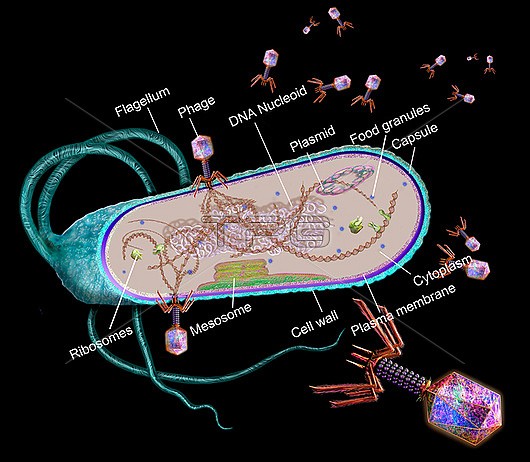
Illustration of phages (purple) and a cross-section of a bacteria cell with its structure and internal components labelled. Bacterial cells do not have a membrane-bound nucleus or organelles. In the cell's cytoplasm is the bacterial chromosome, which contains the cell's genetic information in the form of DNA (deoxyribonucleic acid). There is also a DNA plasmid (pink ring). Such plasmids often carry beneficial genes, such as those for antibiotic resistance, and can be exchanged between bacteria in a process known as conjugation. Ribosomes, the site of protein synthesis, are also seen. A typical bacterium is covered by an external capsule, and has a rigid cell wall, and an inner plasma membrane. Some bacteria also have appendages called flagella that are used for locomotion. Bacteria can be infected by bacteriophages, or phages. They attach to the surface of a bacterium and inject genetic material into the cell. The viral genetic material then hijacks the bacterium's own cellular machinery, forcing it to produce more copies of the bacteriophage. When a sufficient number have been produced, the phages burst out of the cell, killing it. For an unlabelled version of this image, please see image F032/8831.
| px | px | dpi | = | cm | x | cm | = | MB |
Details
Creative#:
TPG32483764
Source:
達志影像
Authorization Type:
RF
Release Information:
須由TPG 完整授權
Model Release:
N/A
Property Release:
N/A
Right to Privacy:
No
Same folder images:

 Loading
Loading